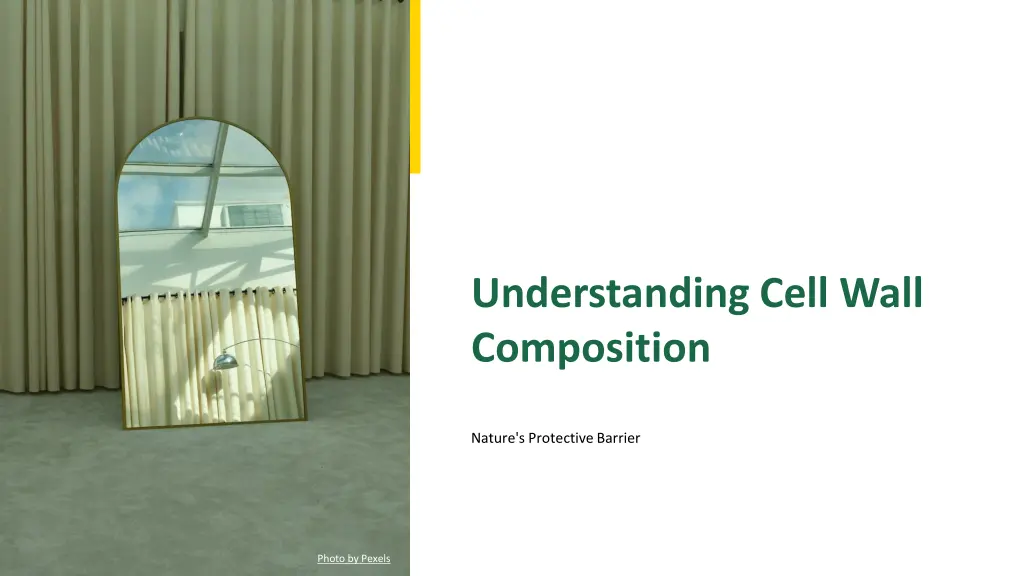
Unveiling Cell Wall Composition: Nature's Protective Barrier
Delve into the intricate composition of the cell wall, a vital protective structure in plant cells. Explore the roles of cellulose, xylan, and lignin, crucial elements that provide support, strength, and durability. Enhancing your understanding of these components can lead to advancements in agriculture and bioengineering practices.
Download Presentation

Please find below an Image/Link to download the presentation.
The content on the website is provided AS IS for your information and personal use only. It may not be sold, licensed, or shared on other websites without obtaining consent from the author. If you encounter any issues during the download, it is possible that the publisher has removed the file from their server.
You are allowed to download the files provided on this website for personal or commercial use, subject to the condition that they are used lawfully. All files are the property of their respective owners.
The content on the website is provided AS IS for your information and personal use only. It may not be sold, licensed, or shared on other websites without obtaining consent from the author.
E N D
Presentation Transcript
Understanding Cell Wall Composition Nature's Protective Barrier Photo by Pexels
01 Cell Wall Overview Table of Contents 02 Cellulose: The Backbone 03 Xylan: The Hemicellulose 04 Lignin: The Complex Polymer 05 Conclusion and Thanks
1 Cell Wall Overview Nature's Structure The cell wall is a critical structure providing support and protection to plant cells. It maintains cell shape and acts as a barrier against pathogens and mechanical stress. Composed of various materials, the cell wall is essential for plant health and function. Understanding its composition aids in enhancing agricultural practices and overall plant biology. Photo by Pexels
2 Cellulose: The Backbone Primary Component Cellulose constitutes 35-50% of the cell wall's composition, forming its main structural element. It is a polysaccharide that provides rigidity and strength to the cell wall. Cellulose fibers are tightly packed, contributing to the wall's overall integrity. This component is vital for plant growth and resilience against environmental stresses. Photo by Pexels
3 Xylan: The Hemicellulose Supporting Role Xylan, making up 20-35% of the cell wall, is a type of hemicellulose that interacts with cellulose. It helps in binding cellulose fibers together, enhancing wall cohesion and flexibility. Xylan's presence can influence the digestibility of plant materials, impacting herbivores and livestock. This component plays a crucial role in biofuel production and paper industry. Photo by Pexels
4 Lignin: The Complex Polymer Strength and Durability Lignin constitutes 10-25% of the cell wall, providing rigidity and resistance to degradation. It is a complex phenolic polymer that fills spaces between cellulose and hemicellulose. Lignin enhances the water resistance of the cell wall, contributing to plant survival in various environments. Understanding lignin's role is important for improving biomass utilizationin industries. Photo by Pexels
5 Conclusion and Thanks Appreciation In summary, the composition of the cell wall includes cellulose, xylan, and lignin, essential for plant structure. Each component plays a distinct role in providing support, protection, and functionality. A deeper understanding of these materials can lead to advancements in agriculture and bioengineering. Thank you for your attention and interest in the fascinating world of plant biology! Photo by Pexels
